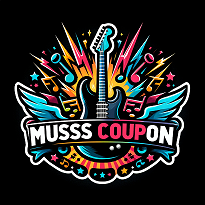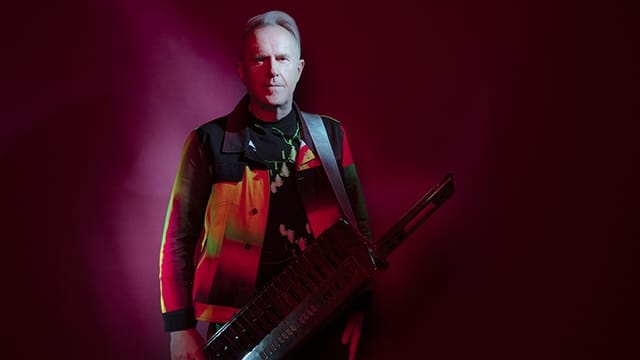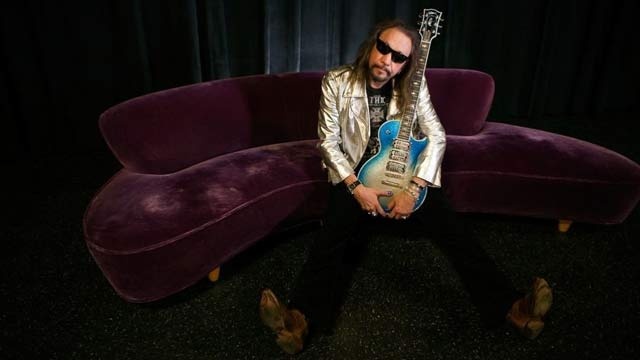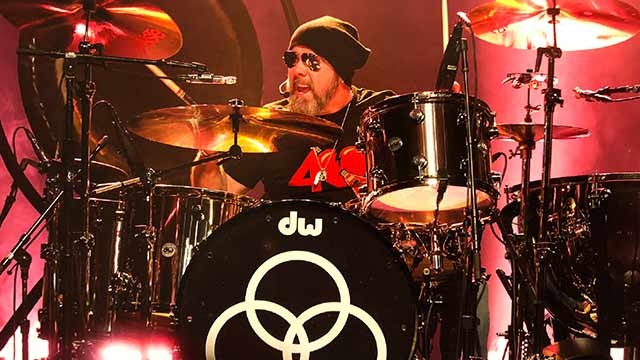And Jones remains active to this day, as evidenced by a North American tour he will be launching in August, which will also feature such ’80s pop notables as ABC and Haircut 100 rounding out the bill. Speaking to AllMusic shortly before the tour’s launch, Jones spoke about the genre he is most associated with, his groundbreaking use of synths way back when, and modern day artists he admires, among other topics.
What can fans expect with the upcoming tour with ABC and Haircut 100?
Jones: “They can expect a really fabulous evening of music. Between the three of us, there is an awful lot of really great songs – ABC with a really sophisticated sound and classy, and Haircut 100 haven’t toured America for 40 years, so that’s going to their moment, I think. It’s going to be a fab night.”
How do you compare concert audiences today to back in the ’80s?
Jones: “We’ve grown up together, so we’re growing old together. [Laughs] But the other thing is there are a lot of young faces appearing in the audience, as well. Which is very exciting. For them, the music is brand new – because they didn’t grow up with it, they’re hearing it for the first time with streaming services and access to 30/40 years of music. So, you can dip into everything. My heart is always lifted when I look out and there are young people in the audience really digging it. So, that’s a change.”
What do you think of the term “synth pop”?
Jones: “I was using synths and I was writing pop music, so it’s pretty accurate. [Laughs] I’ve gone on to do many different things with my music, but don’t people just love to put things in a box? I don’t think I belong in a box. And most artists don’t feel they belong in a box. But, if it helps to categorize things, I guess I have to put up with that.”
What was your synthesizer set-up like in the ’80s compared to now?
Jones: “It was what I could buy at my local shop. I was working in a factory at the time, so I had a limited budget. I got an 808 drum machine [Roland TR-808], I got a Moog Prodigy – a couple of those, one for bass and one for lead lines. I had a Juno-6 [by Roland] which had no memory. And I triggered things from the drum machines – so there were no sequencers.”
…there are a lot of young faces appearing in the audience, as well. Which is very exciting. For them, the music is brand new – because they didn’t grow up with it, they’re hearing it for the first time with streaming services and access to 30/40 years of music.
“I had twelve notes to play on my Pro-One [a synthesizer by Sequential], and it was all very difficult to control, actually. And I had to do all the pre-programming between songs. It was before computer and standalone sequencers. It was such fun doing it…and also very nerve-racking, because gear used to go wrong. A lot. But it was where I learned how to do what I do – to still give a performance even when you get in trouble with the technology.”
“The way I explain what we do now, it’s a culmination of using the technology – which is sequencers [Ableton] and then also great players. Really sophisticated, accomplished players on bass and guitar. And I’ve been playing since I was seven. For me, that’s where I sit – it’s a marriage between old school skills and using the technology. That’s the place I love to be. And I’m very happy with it.”
How much of a role did MTV play in your success Stateside?
Jones: “It was massive. This whole new way of presenting itself just exploding – right at the time you were starting your career. And because a lot of what I did with my live shows – my one-man show – was very visual with my friend Jed [Hoile], we both created these great characters who made it interesting for the audience. And we used to use TV screens on stage – with VHS tapes cut up. We were always into visuals. So, MTV was right up our street when it came along. Thankfully, MTV really liked what we did – because we were English, and we had this new sound with synths and drums machines. So, it was fantastic, really.”
Did MTV have the same effect in the UK as it did in the US?
Jones: “It did not have the same effect. You have to remember that in the UK, we had National TV – which is the BBC. And the only place you got to see people was Top of the Pops. And most of the time, it was you performing live. And when you couldn’t be there, they would show a video. Or, if it was Michael Jackson, they would show one of his videos. So, it was not the same – we didn’t have MTV really impacting the whole country like it did in the States.”
What are some memories of playing Live Aid in 1985?
Jones: “It was an amazing thing. I was on tour in America at the time – I wanted to do Live Aid really desperately. I wanted to be there – it was such a good cause, I wanted to put my weight behind it. So, we cancelled shows on the west coast of the US, and me and my backing singers flew back to London. I chose to do a song called ‘Hide and Seek’ at the piano – which I thought was the most important song for me to do for that occasion, because it was a song about hope.”
“And everyone thought, ‘Oh, he’s the ‘synth guy.’ Can he play the piano?’ Well, I’ve been playing the piano since I was seven, so it was second nature to me. It was wonderful because the whole Wembley [audience] joined in with me when I got to the chorus. And that song has become a bit of a highlight for me playing live – because people who saw that live at the time really related to that performance. The whole day was incredible. I got to meet David Bowie and Paul McCartney and Linda McCartney. Everyone was there. It was a day I’ll never forget. I’m grateful I was part of it.”
Did you watch Queen’s set that day, and if so, was it as magical as it’s been made out to be?
Jones: “I did. I was out in the audience watching it. It was THE performance of all-time. I don’t think anybody could beat that. It was just incredible. And I’m so glad I got to witness it. It was like, ‘Yeah! You guys know how to do this.'”
Were there any other performance you witnessed that day that were memorable or on par with Queen?
Jones: “That was the one that really did it for me. I thought U2 were great that day, as well. It was a launch pad for both of them – they were already doing well, but that took them to a global level. Those two performances for me were great.”
What do you recall about the song “Things Can Only Get Better”?
Jones: “Human’s Lib was relatively easy for me, because I’d been performing those songs live for two or three years. I had them written and had them all worked out. I had the sounds and everything. So, I was going into the studio to recreate what I was doing live. When it came to Dream into Action, I did not have anything prepared at all. And I was touring all over the world – every day it was busy. I had a little recording set-up that my guys set up a studio for me at every venue, and after soundcheck, I would be working on new material. And that’s where “Things Can Only Get Better” was written.”
“And being on tour, you’re really pumped up to do a show in the evening – so I wanted to capture that excitement and have choruses that people could sing along with. Because everyone was singing along with my songs when I performed. And I could check it out with the band on the tour bus – play the demos to them and see how they were reacting to it and see if I was on the right track.”
“The lyrics – which are the most important part of me – is about when things go wrong, which they are going to do, if you do anything in this world of note, you’re going to get opposition and you’re going to get difficult times and you’re going to be challenged. So, this is the song for that occasion. But even if you blow it and get it wrong, you can still pick yourself up and take the new day and go forward again. Just learn from those times. To me, things can only get better if you decide that. It’s meant to be an empowering song – that we have that in our power to change the way we view life and to be positive, if we wish to.”
Also, what about “No One Is to Blame”?
Jones: “I’m still trying to work that one out! It means a lot of different things to a lot of different people. Again, it’s a song about wanting things that it seems you’re not going to be able to have. And also acknowledging that we have all these desires and feelings for others and for things, and it’s part of being a human being. It’s managing and coming to terms with all that stuff. Let it be a force for driving you forward rather than bringing you down. So, we’re not to blame for being the human beings we are – we find ourselves on the planet with this incredible brain that we all have.”
“And when it’s not going right or we have feelings that we’re not comfortable with, we’re not really to blame for it. So, if we spend our whole lives being guilty and miserable because of it, that’s a real shame. So, “No One Is to Blame” goes with all the things I just said. Each time I sing it, I’m slightly interpreting it differently. I think that’s the fun thing about that song – people have a lot of different interpretations. And that’s good – it’s a sort of blank canvas for people to get what they want from. Which is in contrast to most of my songs, which are straightforward and you know what I’m all about.”
Were the ’80s an expectational time for popular music?
Jones: “I think every time is special for music. Obviously, I’m going to be very closely associated with that time. There were a lot of amazing young people making incredible music – in all different genres. People think of the ’80s as one kind of music. It wasn’t. It was everything from indie rock to heavy metal to synth pop to reggae…it was a real eclectic mix of people being really good at what they did and having success on the radio. And because we didn’t have access to the internet, we had to go through the traditional gateways to get our music out. Which was record companies, radio, and MTV. This conspired to create a very vibrant scene that was not just about the music – it was about fashion, as well.”
“MTV meant you had to present yourself visually – you couldn’t hide away anymore. So, it developed more sides of you as an artist. And some people went with that and some people didn’t. But I just think it was a really fascinating decade for music. It was looked upon very badly for quite a long time, but it seems to have come out of that shadow, and people go, ‘These songs are really great, aren’t then?’ It’s the songs that really have stood the test of time. So, to me, I will always be a great decade. But, so were the ’60s, and so were the ’70s. The ’70s – what a decade that was.”
Are there any modern day artists that you admire who are using modern technology in a unique way?
Jones: “My friend BT is always breaking new ground with technology. He’s incredible. Jacob Collier I think is a once in a generation talent…or a multi-generational talent. He is absolutely incredible. And then on the jazzy/funky side, I love what Cory Wong is doing. I also love a classical composer, Eric Whitacre, who composes for voices and small choirs – and oh my God, that stuff is just amazing. So, those are my four.”
For more info, visit www.howardjones.com



